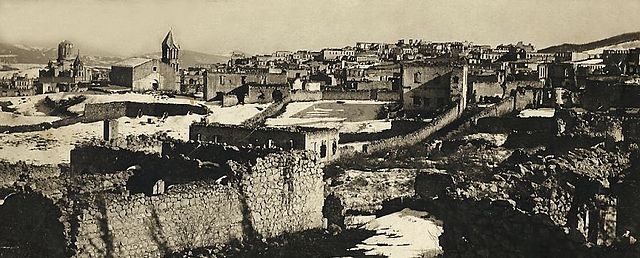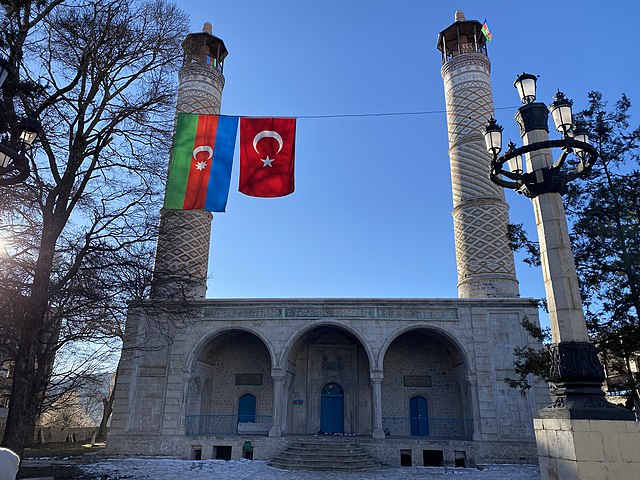The Shusha or Shushi massacre, also known as the Shusha pogrom, was the mass killing of the Armenian population of Shusha from 22–26 March 1920 and the destruction and process of "cultural de-Armenianization" of Nagorno-Karabakh. The number of deaths vary across sources, with the most conservative estimate being 500, and the highest estimates reaching 20,000.
Ruins of the Armenian half of Shusha after the city's destruction by the Azerbaijani army in March 1920. In the center: the defaced Armenian Ghazanchetsots Cathedral
Shusha's Armenian quarters in the aftermath of their destruction by Azerbaijani army in March 1920. In the background: defiled Cathedral of the Holy Savior and Aguletsots church.
Ruins of the Armenian part of Shusha after the 1920 pogrom. In back is the church of the Holy Mother of God (Kanach Zham).
The Armenian quarter of Shusha after the massacre, with the Holy Saviour cathedral in the background.
Shusha or Shushi is a city in Azerbaijan, in the region of Nagorno-Karabakh. Situated at an altitude of 1,400–1,800 metres (4,600–5,900 ft) in the Karabakh mountains, the city was a mountain resort in the Soviet era.
Landmarks of Shusha, from top left: Ghazanchetsots Cathedral • Yukhari Govhar Agha Mosque Shusha fortress • Shusha mountains House of Mehmandarovs • City center Shusha skyline • House of Khurshidbanu Natavan
Saint John the Baptist Church (Kanach Zham), built in 1818.
Yukhari Govhar Agha Mosque, completed in 1885.
The Palace of Khurshidbanu Natavan, the daughter of the last ruler of Karabakh Khanate, late 19th-early 20th centuries








